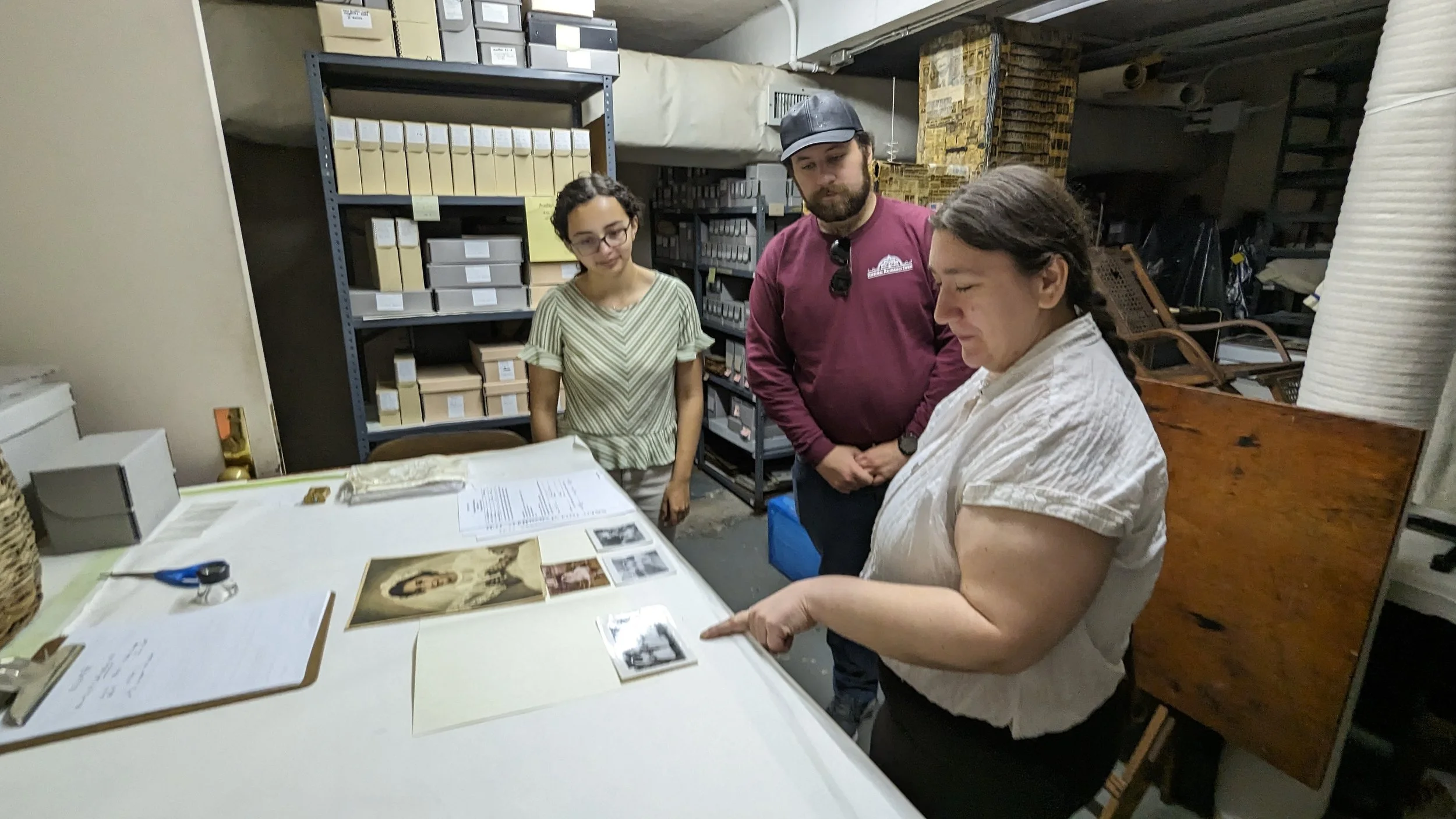Deciphering the Past with Collections Interns
This past fall, Collections Interns Cristina Diaz and Joe Chierchio worked alongside Collections Manager Carli DeFillo and Collections Care Officer Colyn Hunt to delve into two projects. Together, the interns learned the careful steps it takes to catalog new collections items and to transcribe records that uncover previously unknown histories.
The first project was to catalog a recent donation from one of HRT’s very own historical interpreters, Maria Formica. The donation–consisting of photos, gloves, and a purse–unveils significant moments in Maria's life, including her first Communion, confirmation, and wedding, all of which took place here on Staten Island. Maria’s donation not only brings her personal history to light, but also adds another layer to the ongoing narrative of Historic Richmond Town and our mission to tell the stories of all Staten Islanders, past and present.
In this project, interns primarily learned that the process of accessioning donated items involves three key components:
Inventory Management: Accurately registering and storing each item in a designated location ensures that the unique history attached to the item is maintained.
Condition Reporting: Careful examination of each incoming object helps identify its current condition, as well as signs of damage, deterioration, or pests. This meticulous process aids in monitoring changes, addressing environmental concerns, and identifying objects in need of special care or treatment.
Research: Conducting detailed research to determine information such as the age, maker, or origin of each object not only enhances understanding of the object itself, but also contributes to the broader historical narrative.
In the second project, Cristina and Joe got to transcribe an original 1860 record of purchases made by the Geibs family at the Stephens General Store, which is located in the center of Historic Richmond Town’s main village. These handwritten records serve as a remarkable window into the 19th-century shopping experience in Richmond village.
The process of transcribing these records involved honing the skill of reading intricate handwriting and deciphering abbreviations and symbols used for various items, money, and measurements. From basic necessities like nails and paint, to more indulgent items like ribbons, charcoal, and cheese, the interns gained insights into the diverse needs of the community through the transcriptions of the records.
Taking things one step further, the examination of these historical receipts allowed the interns to draw intriguing connections between the everyday lives of the Geibs family and the purchases they made. For instance, a surge in acquisitions of nails, hinges, and paint supplies in August of 1860 suggests a period of building or repair work. The purchase of lemon extract and sugar hints at preparations for celebratory baking. Our interns learned that preservationists working on transcriptions are much like detectives, using clues to unveil a treasure trove of discoveries and fill in pieces to lost narratives.
In working on both projects, our interns discovered that the meticulous processes conducted by those responsible for the care of a museum’s collections are essential for preserving these objects for future generations, to foster a deeper connection with our shared past and to unravel the vibrant stories embedded within each item.
We encourage you to stop by Historic Richmond Town and experience some of this discovery for yourself. The General Store is open to the public during special programs and events, so if you would like to see some of the items that local families would have purchased be sure to keep an eye on our Events Page.




